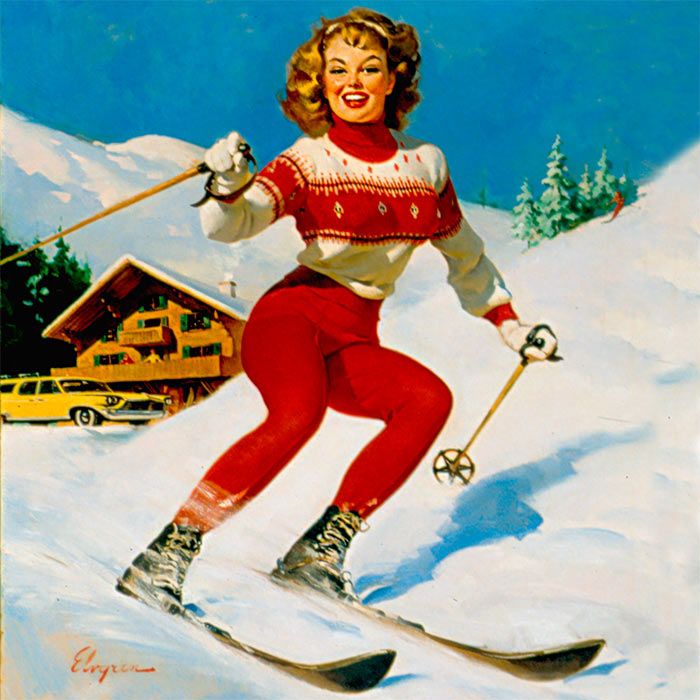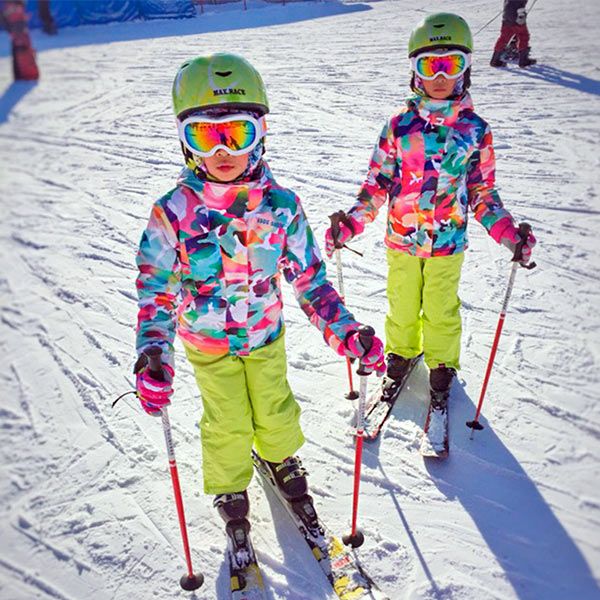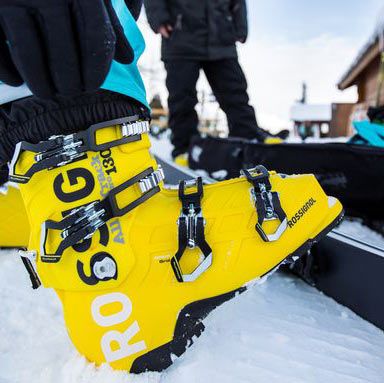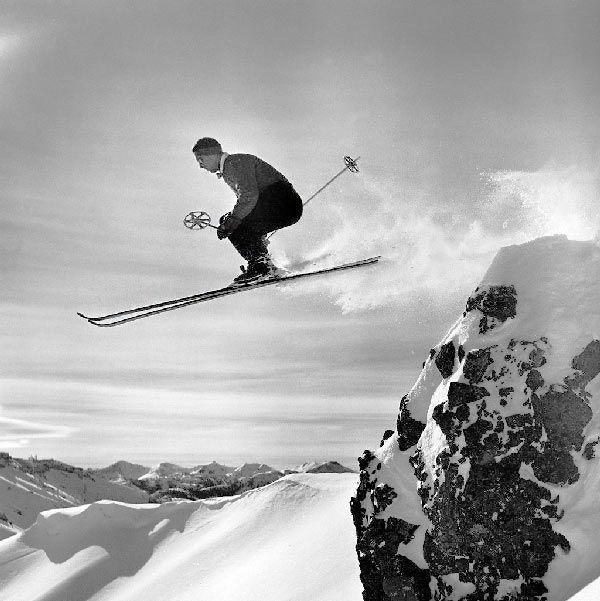 Buying a New Snowboard
Where there’s plenty of snow, you can go skiing, hiking, or try your hand at the extreme sport of snowboarding. This sport has taken root in Russia relatively recently but has already gained widespread popularity among young people who love risk, speed, and excitement. To cater to this demand, numerous specialized stores have opened across the country, offering boards and gear for snowboarding.
Buying a New Snowboard
Where there’s plenty of snow, you can go skiing, hiking, or try your hand at the extreme sport of snowboarding. This sport has taken root in Russia relatively recently but has already gained widespread popularity among young people who love risk, speed, and excitement. To cater to this demand, numerous specialized stores have opened across the country, offering boards and gear for snowboarding.
Experienced riders have no trouble navigating the extensive range of such equipment, but what about beginners who are just stepping onto a board for the first time?
What You Need to Know About Snowboards
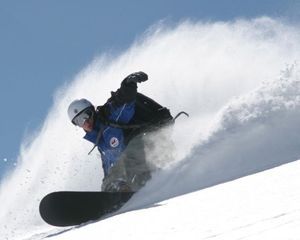 What Snowboard to Choose
The first thing a newcomer to snowboarding should know is that there are several different snowboarding styles. These styles will dictate the type of board you choose. What are these styles?
What Snowboard to Choose
The first thing a newcomer to snowboarding should know is that there are several different snowboarding styles. These styles will dictate the type of board you choose. What are these styles?
Sporting – similar in technique to alpine skiing. This includes slalom, boardercross, giant slalom, and other disciplines.
Freeride – riding on unprepared slopes in a free style.
Freestyle – riding with acrobatic elements of varying complexity, performed on specially prepared tracks.
Hard style (racing) – involves prepared tracks and specialized equipment for high-speed descents.
List of Movies About Snowboarders We’ve prepared a list of movies about snowboarders so you don’t have to scour the Internet for them.
Check out some excellent coverage of extreme off-road racing at this link . All about off-road adventures.
While it’s possible to ride different styles on the same snowboard, those who are drawn to aggressive forms of snowboarding may prefer “hard” boards that are specifically designed for racing, carving, and slalom. Therefore, the first criterion by which boards differ is flexibility.
“Soft” boards are intended for beginners. They don’t hold well on hard-packed snow but allow easier gliding on less complex descents. These boards are great for riding on untouched powdery snow. They are excellent for learning simple tricks and jumps and are relatively easy to handle.
However, executing sharp “carved” turns that are typical of carving style won’t be possible on a soft board.
The stiffer the board, the more experience it takes to handle it.
The stiffest types of snowboards are designed for high-speed descents, acrobatics, and styles like racing, carving, and boardercross.
Determining Snowboard Size
The next factors to consider when selecting a snowboard are the rider’s height and weight. Based on these, you’ll determine the appropriate snowboard length.
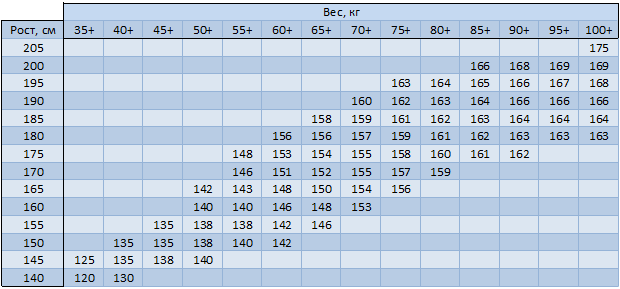 Snowboard Size Chart by Height
Snowboard Size Chart by Height
Additionally, remember that the length of the board should be chosen based on the riding style: for freeride, you’ll want a slightly longer board than for freestyle.
Snowboard Shapes
There are three main types of snowboards by shape:
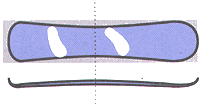 Directional Snowboard
Directional – boards with a longer and softer nose compared to the tail. These boards are great for riding on untouched slopes. This shape is also common for stiff boards designed for racing. Their bindings are usually set back toward the tail by around 25-35 millimeters.
Directional Snowboard
Directional – boards with a longer and softer nose compared to the tail. These boards are great for riding on untouched slopes. This shape is also common for stiff boards designed for racing. Their bindings are usually set back toward the tail by around 25-35 millimeters.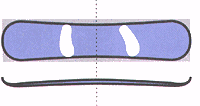 Twin Tip Snowboard
TwinTip – boards where the nose and tail are symmetrical, made from the same material, and have an equal amount of stiffness. These boards are ideal for riding backward (switch). Their bindings are placed at the exact center of the board.
Twin Tip Snowboard
TwinTip – boards where the nose and tail are symmetrical, made from the same material, and have an equal amount of stiffness. These boards are ideal for riding backward (switch). Their bindings are placed at the exact center of the board.Twin-Tip Directional – a symmetrical board in shape but with different levels of stiffness in the nose and tail. This is a compromise option.
Abzakovo Ski Resort Read about Abzakovo Ski Resort on our website.
If you’re planning to buy binoculars, you’ll find this page helpful. It describes different types of binoculars and what to look for when purchasing.
Don’t miss the description of the legendary ski center Dombay . For those just beginning to learn the basics of snowboarding, it’s better to opt for classic boards with a Directional shape. However, if you plan to ride switch (backwards), you can take a chance and choose a Twin-Tip Directional board.
The lifespan of a snowboard with active use is about a year to a year and a half. Therefore, there’s no need to worry that your skill level will improve while the board remains “too basic”—you’ll have to replace it anyway.
Snowboard Sidecut Radius
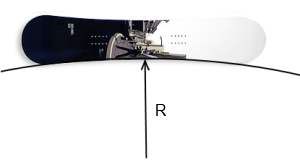 Snowboard sidecut radius
Snowboard sidecut radius
This term refers to the combination of dimensions for the nose, waist, and tail of the board. It represents the radius of a circle that corresponds to the sidecut curve of the edge. The smaller the radius, the more maneuverable the board becomes. A smaller radius also means tighter, more precise turns, resulting in more refined riding.
For beginners, this parameter is not particularly significant. It plays a larger role for those who prefer riding styles like halfpipe.
Additionally, keep in mind that the deeper the sidecut at the waist, the less space there is on the snowboard for your feet. Not all snowboarders’ feet will fit comfortably on such boards.
The foot size determines the optimal width of the board.
If the board is too narrow, your boots might scrape the snow, hindering your riding experience. On the flip side, a board that is too wide will make turning and maneuvering more difficult.
For high-speed snowboarding styles, narrower boards are preferred, whereas for freeriding, a wider board could be a good choice, offering greater surface area to land jumps more effectively.
That said, going overboard with width is also not advisable—a board that is too wide won’t make for a fun ride. Ideally, when strapped into the snowboard, your boots should protrude beyond the edges by about 1–1.5 centimeters. This is considered the optimal setup.
Snowboard Flexibility
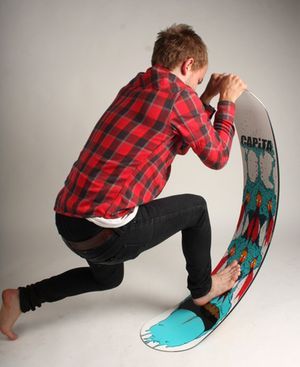 Snowboard flexibility
Snowboard flexibility
Soft-flexing snowboards—Easyflex—are characterized by thinner wood layers under the binding points and a gradual thinning from the waist to the nose and tail. These boards allow for easy turning without requiring high speed or excessive force. They are ideal for beginners, as they’re easy to control.
Boards with medium flexibility—Midflex—have a thicker layer of wood under the bindings, though they also taper towards the nose and tail. These boards are an excellent choice for freestyle riders, offering good stability at moderate speeds while maintaining nimbleness for tricks.
Fully rigid boards—Fullflex—have thick wood layers under the bindings and thinner waists that allow for flexibility. These snowboards are designed for performing tricks in freeriding.
Snowboard Bindings: Soft or Hard?
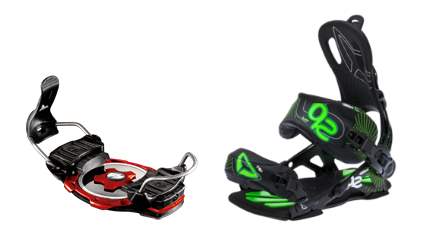 Snowboard bindings
Snowboard bindings
When choosing bindings for your snowboard, you’ll need to decide between soft or hard options.
Hard bindings secure the boot in the toe and heel areas. They tightly clamp the boot in these two spots and don’t engage much with the other parts of the boot or the foot. Such bindings are typically used with stiff snowboards.
Soft bindings have a larger contact area with the boots. They consist of a platform with upper and front straps, a highback, and a heel cup. These should be chosen with a design that isn’t overly rigid and is ergonomically shaped for comfort.
There are also step-in bindings that can be detached without using your hands. However, they aren’t always convenient—snow can clog the mechanisms, hindering functionality. Additionally, they don’t always transfer force to the board’s edges effectively.
For beginners, it’s best to go with boards outfitted with soft bindings. Not only do they securely fix the foot, but they also provide a sense of psychological comfort and safety compared to hard bindings.
Thermal underwear for sports
It’s essential to dress appropriately for active winter recreation. You can learn more about choosing the best thermal underwear for sports on our website.Although Belarus mainly has flat terrain, it does feature some excellent and, importantly, affordable ski resorts. Read more on this page .
How to Choose Snowboard Boots?
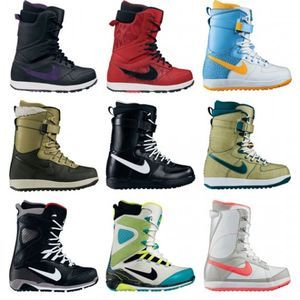 Snowboard boots
Snowboard boots
There’s nothing worse than uncomfortable footwear—everyone knows that. And in snowboarding, this rule is more critical than ever. That’s why the first and foremost thing to focus on when choosing boots for snowboarding is comfort.
The boots should neither chafe nor feel loose on your feet. At the same time, they shouldn’t rigidly clamp your heels. Ideally, the inner lining of the boots should be waterproof yet breathable—nobody wants to wear damp boots.
You should also look for models where the inner layer conforms to the shape of the snowboarder’s foot.
Boot styles differ between soft and hard boards.
“Hard” boots resemble ski boots in both their construction and how they fasten.
In principle, ski boots can also be used for snowboarding, although they are harder to match specifically to a snowboard. Therefore, it’s best to buy your boots and board together, ensuring that they’re appropriately paired.
